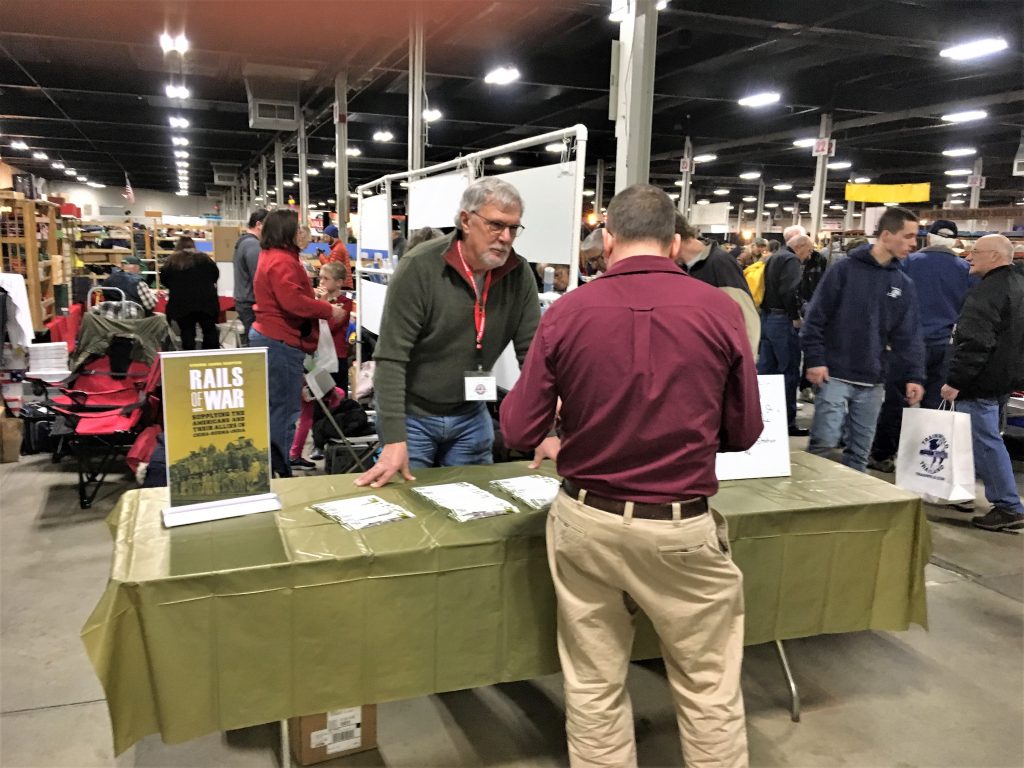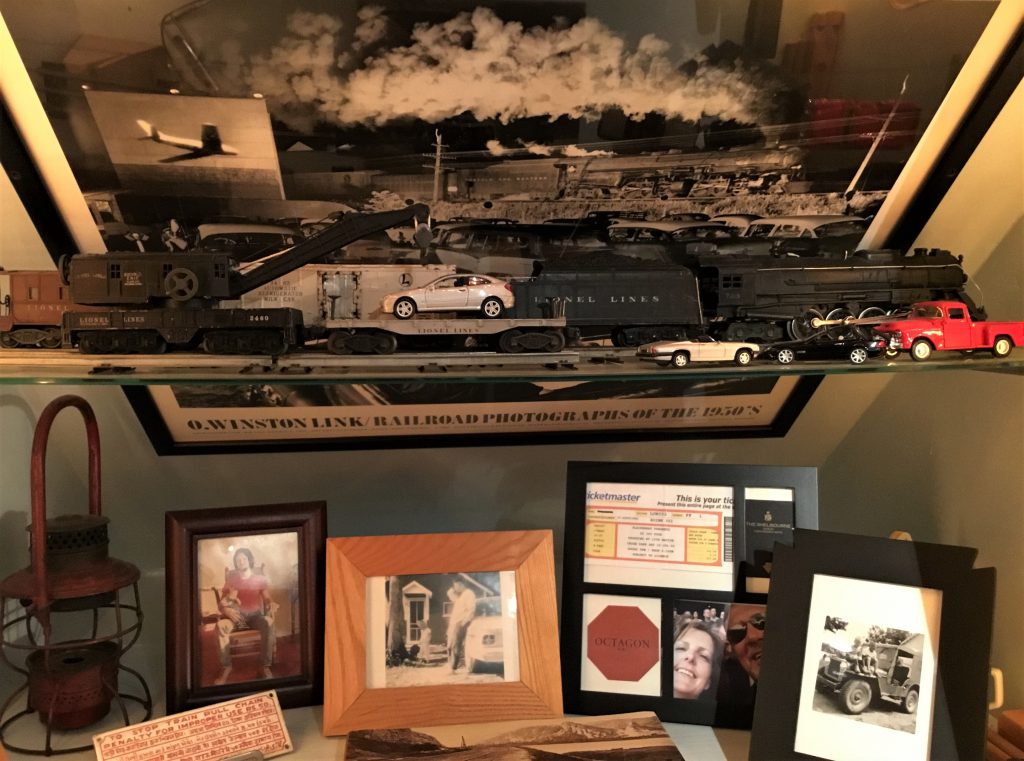Railroad Nirvana or Ferroequinology Unleashed
Happy people, I didn’t see a scowl all weekend, Buddha all. And, before I offend Buddhists, I use nirvana in an unexamined way, a colloquial synonym for Christian heaven. But, as true Buddhists know, nirvana is the extinction of desire, and in that sense, the Amherst Railway Hobby Show is the opposite. The show is an irresistible inducement to material lust. Any and all railfan hobby stuff can there be purchased in one of the four expansive pavilions that draw upwards of 45,000 paying entrants over two days. Thus, the show is more like wafting a dish of Gifford’s ice cream under the nose of a newly sugar-free devotee during Lent.
The attendees were a determined lot. At nine o’clock sharp, on a cold and snowy Saturday morning, they flooded the entrances after queuing outdoors for who knows how long. The massive parking lot of the Big E was nearly full when we arrived early. By the way, the Big E, also known as the Eastern States Exposition, is a not-for-profit with a board drawn from all six New England states. It’s huge. The Big E is the West Springfield, Massachusetts home of the New England Fair. (Not a state fair.) At the Big E, all of New England gets to show. Every September you can visit and get your fill of sheep shearing, deep-fried cheesecake, maple syrup, and cotton candy. Last year’s total attendance was 1,543,470. Who knew?

Rails of War displayed near the Dunkin Donuts outlet in a sea of vendors selling every miniature railroad artifact under the sun. Kathy was amazingly patient and supportive. She gave up our usual warm-and-sunny-spot-vacation timeslot to follow me to West Springfield in late January to talk railroad. Yes, I married well. I started a hundred conversations with, “Rails of War is the story of my father’s railroad battalion in World War II. The 721st operated in the China-Burma-India theater in present-day Bangladesh.” Then, nine times out of ten the person to whom I was talking would launch into a story about a relative who served in World War II or confess that he or she was an avid history buff as well as a railfan.
And so it went. For two days. We sold books with the proceeds going to the Amherst Railway Society, and we met many colorful and connected folks. In the crass world of commercial publishing, the weekend was platform development. In my world, it was meeting a bunch of new people.
The railfan hobby–people who build miniature and not-so-miniature railroad layouts, and people who photograph, paint and draw railroad equipment and train movements–falls neatly into the category of ferroequinology. Students of Latin, do you see it? Two parts Latin and one part Greek? The study (ology) of iron (ferro) horses (equine). Clever, eh? After twelve years working as a freight brakeman-conductor for Conrail in one of its busiest divisions and after thousands of hours listening to breakroom banter and onboard tête-à-tête, I learned a new industry word at the Railroad Hobby Show.
My modest career as a ferroequinologist began at a very young age, without an understanding of Greek and Latin. My initiation was by proximity to another ferroequinologist, my dad. James Hantzis was a railroader, a journeyman machinist for the New York Central at the massive Western Division Beech Grove Shops just southeast of Indianapolis. Those shops and the entire town of Beech Grove were built by another ferroequinologist, Frederick William Vanderbilt, for $3.5 million in 1906. Vanderbilt may have known the term, he was Yale educated. I don’t know if my dad knew the word, but he got a solid education at Indianapolis Arsenal Technical High School and later his NYC apprenticeship.
We lived in Beech Grove in 1949, the year I was born. For Christmas that year my mother gave my father a Lionel train set. I was exactly seven weeks old when the present was unwrapped, so I had no idea how cool it was. I doubt that I had any thoughts of any sort. My brother came along a year and a half later, and in short order we figured out just how cool the electric train was. The Lionel set included a locomotive and tender, a milk car with a uniformed man that delivered metal canisters onto a platform, a log car, a hook car, and a caboose. Oh, and it smoked, and had a whistle, and a headlight. And, it still works to this very day. Which is amazing.

My brother and I loved to play with the train, but we played rough. We built Lincoln log cabins and set them on the tracks. We staged model car “accidents.” We may have even set something afire and ran the train through. We were not respectful. I’ve gotten better with age. Now, dad’s train is retired and on display under a big O. Winston Link print. I was for all these years a
Thanks to John Sacerdote, the show director and President of the Amherst Railway Society, for inviting Rails of War and providing a table among the 450 vendors. We were honored to be a part of the show’s fifty-year tradition. – © 2019 Steven James Hantzis





